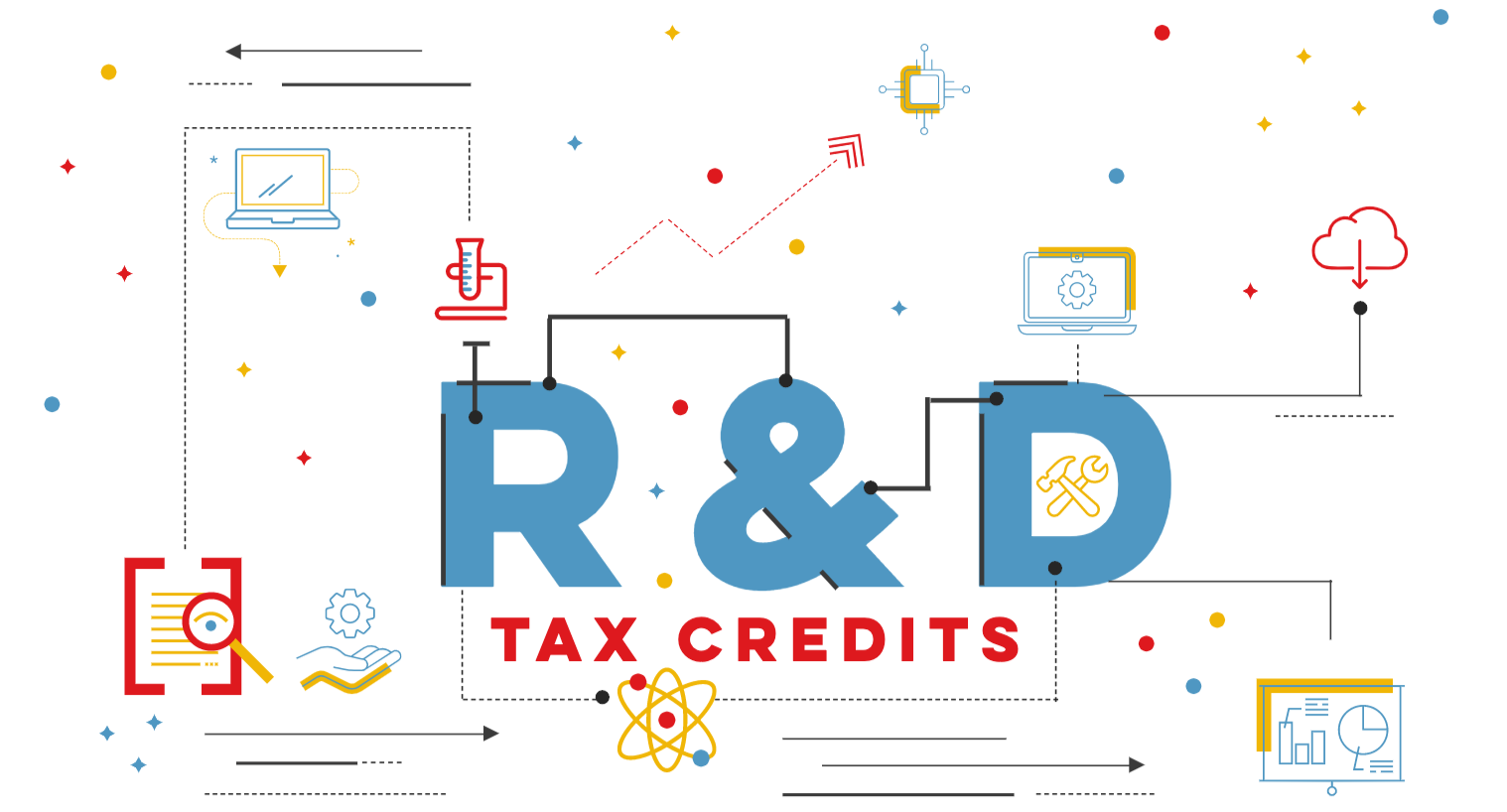Guest Post: The following post is a sponsored guest post by Scott McCutcheon of incentAdvise. All views and opinions represented in this post are the views and opinions of incentAdvise and do not represent those of 500 Startups or any of its staff or affiliates.
2020.03.06

Guest Author

Guest Post: The following post is a sponsored guest post by Scott McCutcheon of incentAdvise. All views and opinions represented in this post are the views and opinions of incentAdvise and do not represent those of 500 Startups or any of its staff or affiliates.
As startups and established companies continue to scale, there are exciting benefits awaiting them that can uncover hidden cash. First introduced as a temporary measure, the Research and Development (R&D) Tax Credit was passed in 1981 and worked to help stimulate the economy. The credit ultimately acted as an incentive to encourage investment within the United States. After years of extensions due to its success, the act was eventually made a permanent part of the tax code in 2015. The credit works to help companies of all sizes create jobs and innovation in the U.S. instead of it being sent overseas.
What is the R&D Tax Credit
R&D stands for Research and Development. The credit is based on companies who have work directed to the innovation, introduction, and improvement of products and processes.
What are the Benefits?
The Research and Development (R&D) is a unique tax credit:
- Helps reduce current and future years of state and federal tax liabilities.
- Dollar-for-dollar offset for state and federal income taxes.
- Instant source of cash for the small to mid-cap businesses.
- Look back studies can recognize unclaimed credits for open tax years (typically 3 or 4 years).
- Credits are carried forward for up to 20 years.
- Many industries qualify for the credit.
- Improved cash flow.
A company could be eligible for the R&D Tax Credit if it:
- Devotes time and resources to creating new or innovative products;
- Improves existing products;
- Develops processes, patents, prototypes, or software; or,
- Hires designers, engineers, or scientists.
R&D credit eligibility is much broader than many companies realize, applying to not only the development of products, but also, activities and operations, such as: New Manufacturing Processes; Environmental Improvements; Software Development; and, Quality enhancements.
The credit is based on several factors:
- Wages paid to employees directly involved with, in direct supervision of, or in direct support of the R&D.
- Materials and supplies used and consumed in the R&D process.
- R&D work performed by outside contractors as long as you (the company) retain substantial rights in what the contractors do.
Typically for companies residing in California, there is a 13-15% benefit from qualifying research expenditures divided between state and federal. This usually results in $50,000-$300,000 in tax savings for a business.
What Types of Companies Qualify?
- Software
Internet Applications, IT/Software Development, Startups, IoT, Hardware Design, and Website Advertising/Marketing, etc.
- Engineering
Aerospace, Architecture, Defense Contracting, Engineering, and Telecommunications, etc.
- Environmental & Life Sciences
Agriculture/Farming, Medical Devices, Pharmaceuticals, Recycling, and Waste Management, etc.
- Manufacturing & Design
3D Printing, Apparel/Textiles, Brewing/Distillery, Consumer Foods and Beverages, Cosmetics, Electronics, Foundry/Metal/Mining, Furniture, Manufacturing, Surfaces, etc.
How the R&D Tax Credit Helps Startups and Small Businesses
Effective as of December 31, 2015, the Protecting Americans from Tax Hikes Act (PATH Act) of 2015 provided that qualified small businesses may elect to use the federal R&D Tax Credit to offset the employer’s portion of the social security (OASDI) payroll tax liability.
Businesses pay 6.2% per employee in FICA social security taxes, that’s $6,200 for every $100,000 spent. Startup companies can now benefit from their research activities to boost their bottom line, regardless of whether or not they’re profitable.
Under the new law, an eligible company is able to utilize up to $250,000 in federal R&D credits against payroll taxes each year.
Please See Below for a Case Study on Several incentAdvise Clients for the 2018 Tax Year (2019 Calendar Year).This case study serves as an example of what a business may expect to see for their federal and state R&D tax credits based on their gross receipts and gross payroll. However, these numbers are respective to the individual client and their specific payroll, outside contractors, and supplies. These numbers establish a range of what a new client may expect to see.
Frequently Asked Questions
- I’m not earning any revenue, can I still qualify?
Companies do not need revenue to claim the R&D Tax Credit. And, they also do not need to be paying any income tax. As mentioned above under “Startups and Small Businesses,” the credit can be taken as a payroll tax offset, up to $250,000 per year.
2. I don’t think my company invents anything, can I still qualify?
With the changes throughout the years to the qualification rules, more companies now than ever before can take advantage of the R&D Tax Credit. Essentially, the credit is designed to be a driver of innovation and improvement of processes. As mentioned prior, R&D Tax Credit eligibility is much broader than many companies realize, applying to not only the development of products, but also activities and operations, such as new manufacturing processes, environmental improvements, software development, and quality enhancements.
3. I don’t have any employees, can I still qualify?
While employee wages are typically the largest component of the credit, outside contractor costs and supplies are also eligible. If you choose to elect the R&D Tax Credit as a payroll tax offset, yet have no payroll, the credit can be carried forward to the next quarterly return. The credit does not expire and will continue to be available to the company until it can be fully used against payroll tax.
4. Why does the government offer the R&D tax credit?
The intent of the credit is to encourage companies within the U.S. to keep technical talent within the country while simultaneously continuing to drive innovation. This keeps not only your company, but the country, competitive both domestically and internationally.
5. I have a CPA, so why haven’t I heard of this?
Even though the credit has been around since 1981, it has gradually evolved over the years, with many companies not even able to take advantage of the incentive until the changes that were made in 2015. Due to its continued evolution over the years, many CPAs may not be up-to-date on the most recent policies and regulations regarding the credit. We currently partner with CPA firms throughout California, Maryland, New York, as well as several other states, to assist them in providing this service for their clients.
6. Is this worth my time?
Absolutely. The R&D Tax Credit remains one of the most valuable incentives offered by the U.S. government for businesses to remain competitive.
About the Author
Scott McCutcheon is the Principal and Founder of incentAdvise, a boutique tax incentive firm located in Southern Orange County servicing clients across the United States. They specialize in working with startups and small businesses to provide the Research and Development (R&D) Tax Credit as well as other applicable tax incentives.
Guest Post: The following post is a sponsored guest post by Scott McCutcheon of incentAdvise. All views and opinions represented in this post are the views and opinions of incentAdvise and do not represent those of 500 Startups or any of its staff or affiliates.



